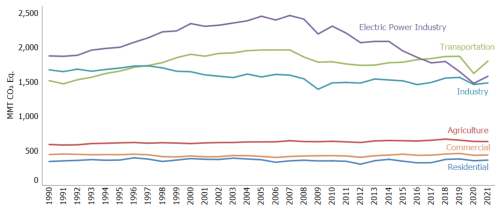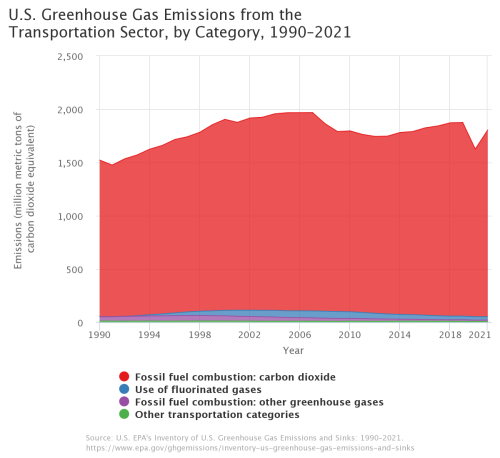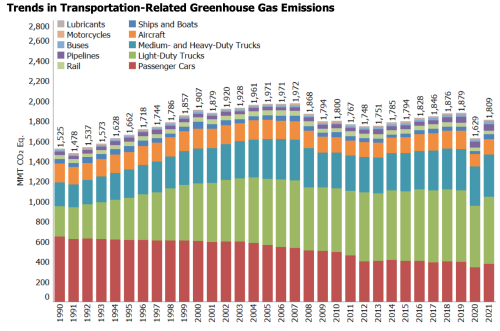The increase in total greenhouse gas emissions was driven largely by an increase in CO2 emissions from fossil fuel combustion. In 2021, CO2 emissions from fossil fuel combustion increased by 7% relative to the previous year. This increase in fossil fuel consumption emissions was due primarily to economic activity rebounding after the height of the COVID-19 pandemic.
For this latest release, EPA has made several improvements, including updates to estimates for oil and gas and for flooded lands such as hydroelectric and agricultural reservoirs.
The GHG Inventory covers seven key greenhouse gases: carbon dioxide, methane, nitrous oxide, hydrofluorocarbons, perfluorocarbons, sulfur hexafluoride, and nitrogen trifluoride. In addition to tracking US greenhouse gas emissions, the Inventory also calculates carbon dioxide that is removed from the atmosphere through the uptake of carbon in forests and other vegetation.

GHG emissions by economic sector. Transportation represented 28.5% of US greenhouse gas emissions in 2021. Source: EPA.
Emissions from petroleum consumption for transportation increased by 11.5% from 2020 to 2021. This trend can be primarily attributed to a 8.1% increase in vehicle miles traveled (VMT) from 2020 to 2021 due to the gradual recovery from the COVID-19 pandemic, which limited travel in 2020. From 2019 to 2021. Emissions from petroleum consumption for transportation decreased by 4.0% following a decrease of 3.7% in VMT over that time period.

Fuel economy of light-duty vehicles is another important factor. The decline in new light-duty vehicle fuel economy between 1990 and 2004 reflected the increasing market share of light-duty trucks, which grew from about 29.6% of new vehicle sales in 1990 to 48.0% in 2004. Starting in 2005, average new vehicle fuel economy began to increase while light-duty VMT grew only modestly for much of the period and has slowed the rate of increase of CO2 emissions.

In 2021, light-duty vehicles represented 58% of CO2 emissions from transportation fossil fuel combustion and medium- and heavy-duty trucks and buses represented 25%. The remainder was due to off-road sources.
This report has been compiled annually since 1993 and submitted to the United Nations Framework Convention on Climate Change. The report is prepared by EPA in collaboration with numerous experts from other federal agencies, state government authorities, research and academic institutions, and industry associations. Under the United Nations Framework Convention on Climate Change (UNFCCC).